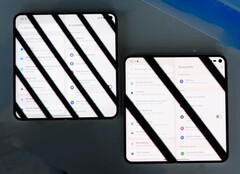The displays of the Google Pixel 9 and Pixel 9 Pro flicker at a PWM frequency of just 240 Hz to regulate brightness. This means the display flickers on and off 240 times per second – the longer the display is turned off, the more the brightness drops. This relatively low PWM frequency, combined with an amplitude that exceeds 20%, at least on the base model, can quickly lead to headaches.
On the Pixel 10, the PWM frequency remains unchanged. However, Android Central has found a setting on the Pixel 10 Pro (XL) and the Pixel 10 Pro Fold that apparently doubles the PWM frequency to 480 Hz. On the foldable flagship, this only applies to the foldable main display. To utilize this higher frequency, an accessibility feature must be activated in the system settings, which Google calls "Adjust brightness for sensitive eyes".
The fact that this option is not enabled by default suggests that enabling it has a downside, such as lower peak brightness, but only more detailed testing will bring further clarity. It is also unclear whether this feature can be added to the Pixel 10 or older Pixel smartphones via a software update, or whether the display hardware is simply incapable of a higher PWM frequency. Depending on the amplitude, a PWM frequency of 480 Hz is unproblematic for most users, although Google continues to lag behind competitors like the Honor Magic 7 Pro, which reaches a PWM frequency of 4,320 Hz.




































